11 Foods High in Vitamin E for Healthy Skin, Hair, Immunity, and More
These nutritious foods are packed with the vitamin E your body needs.
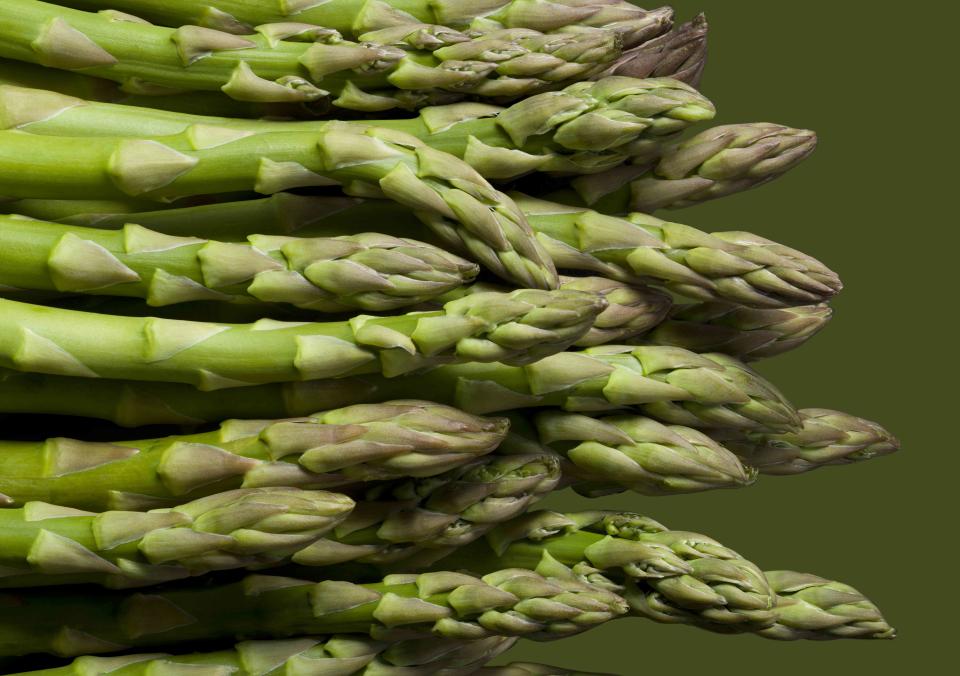
Jonathan Knowles/Getty Images
Fact checked by Isaac WinterMedically reviewed by Kristy Del Coro, MS, RDN, LDN
When it comes to wellness, nutrients like vitamin C and vitamin D often steal the show—and for good reason, too. Among other key health benefits, these vitamins are essential for immune function, a hot topic in the wellness world. But what about other important nutrients, like vitamin E? It may not get as much attention as other vitamins, but this antioxidant-rich vitamin, found in everything from face creams to drugstore shampoos, is just as crucial for your health. Here's what to know about the health benefits of vitamin E, plus foods rich in vitamin E to eat for healthy skin, hair, immunity, and more.
Related: 6 Exceptional Superfoods to Eat for a Strong, Healthy Immune System
Vitamin E Is a Powerful Antioxidant
According to the Clinical Biochemist Reviews, vitamin E is a fat-soluble nutrient, meaning it needs fat in order to be absorbed. It mainly functions as an antioxidant, or a beneficial molecule that fights free radicals. A quick refresher: Free radicals are compounds that, when present in high levels, can cause cellular damage. The body naturally produces free radicals as a result of normal processes (think: metabolism), but factors like environmental pollution and UV radiation can increase free radical formation. If these free radicals build up, they can lead to cellular damage and oxidative stress, a major contributor to chronic conditions like heart disease and cancer, according to research. But that's where antioxidants like vitamin E come in. Generally, antioxidants work by scavenging and neutralizing free radicals, ultimately rendering them harmless. This protects your cells from oxidative stress, keeping them (and you!) healthy and well.
More Vitamin E Benefits
In the case of vitamin E, its antioxidant actions are particularly impressive. For example, it helps protect cell membranes from free radicals, which is key for preventing cellular injury. According to registered dietitian Maddie Pasquariello, MS, RDN, its antioxidant properties also have "the ability to protect the skin from sun damage while stabilizing the skin's barrier." But it doesn't stop there—vitamin E supports skin health by maintaining levels of collagen (the main structural protein in the skin), as well as hair growth, Pasquariello says. This nutrient is also involved in aiding immune function and proper blood flow, according to the National Institutes of Health.
The Daily Recommended Amount of Vitamin E
Simply put, vitamin E is a crucial compound for overall health and wellness. Vitamin E deficiency is pretty rare, but since the body can't produce its own vitamin E, you need to get it from elsewhere. Luckily it's found in myriad plant foods, so it's not hard to reach the recommended amount of 15 milligrams per day, per the 2020–2025 Dietary Guidelines for Americans.
Below are some high vitamin-E foods to eat regularly, according to nutritionists.
Foods High in Vitamin E
Nuts
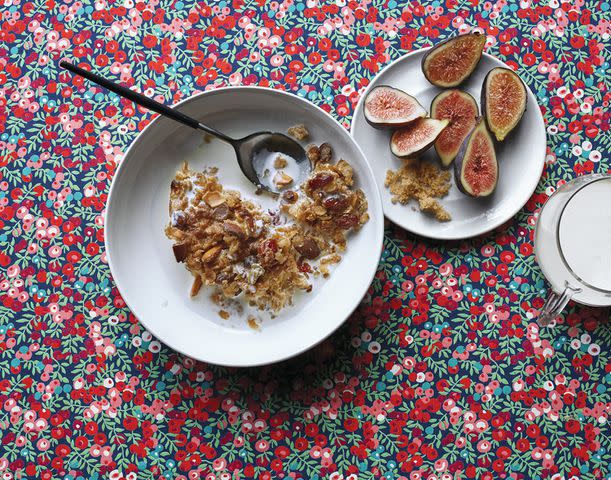
Baked Oatmeal With Cranberries and Almonds
Almonds are one of the highest sources of vitamin E, closely followed by hazelnuts, says Maya Feller, MS, RD, CDN, registered dietitian nutritionist and author of Eating from Our Roots: 80+ Healthy Home-Cooked Favorites from Cultures Around the World. Case in point: A one-ounce serving of almonds contains about 7 milligrams of vitamin E, while the same amount of hazelnuts contains about 4 milligrams. "These nuts are also great sources of dietary fiber and heart-healthy mono- and polyunsaturated fats," Feller adds. You can enjoy them in the form of nut butters, which taste delicious on top of toast, in smoothies, or mixed into oatmeal, adds Marissa Meshulam, MS, RD, CDN, registered dietitian and founder of MPM Nutrition.
Seeds
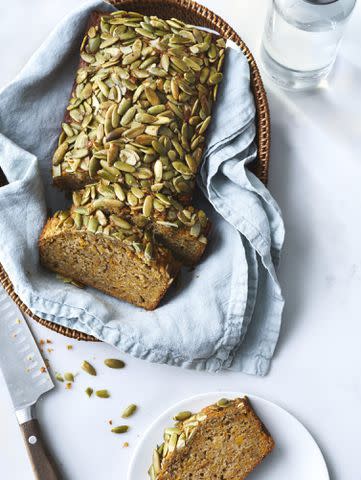
Seeded Miso Sweet Potato Bread
The next time you're craving something crunchy, reach for plant seeds. Sunflower seeds are particularly rich in vitamin E, according to Meshulam. For context, an eight-ounce serving (about ¼ cup) holds roughly 7 milligrams of vitamin E, which is nearly half the daily recommended amount. That's on top of other nutrients found in sunflower seeds, like iron, calcium, magnesium, and fiber, Pasquariello says. Sunflower seeds (and plant seeds in general) add flavor and texture to myriad dishes, including oatmeal, yogurt, salads, and soups.
Related: 6 Health Benefits of Snacking on Pumpkin Seeds
Nut and Seed Oils
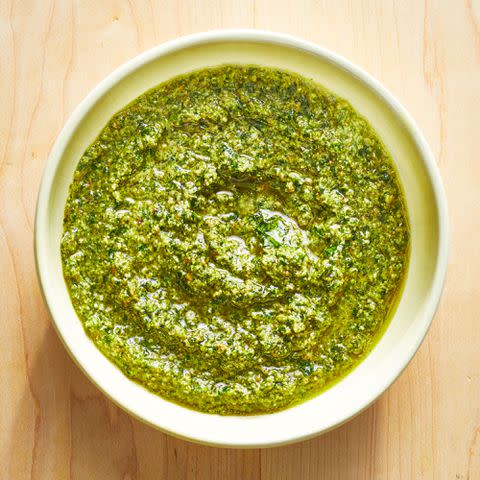
Since seeds and nuts contain vitamin E, it's no surprise that their oils are just as noteworthy for their vitamin E content. According to Meshulam, sunflower and wheat germ oil are particularly rich in the nutrient, though they have different applications. Sunflower oil "is a very stable oil, so [it] can be used in high-heat cooking," she explains. Meanwhile, wheat germ oil has a lower smoke point, so it should be used in salad dressings or drizzled over cooked dishes.
Leafy Greens
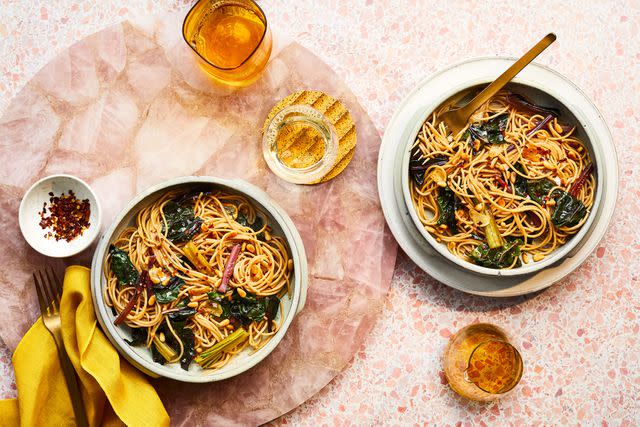
Whole-Wheat Pasta With Chard and Pine Nuts
There's a lot to love about leafy greens. They're versatile, delicious, and packed with vitamin E (among plenty of other powerful nutrients). Some of the best options include spinach and Swiss chard, which both offer about 2 milligrams of vitamin E per half cup. Even the leafy tops of beets contain this vitamin, giving you an excellent reason to use the vegetable. In general, leafy greens of any variety are easy to incorporate into dishes. Try adding them to a stir fry, breakfast hash, soups, stews, or chili right at the end of cooking, Pasquariello suggests. For a more greens-forward approach, simply sauté leafy greens with garlic and spices, then enjoy as a simple side dish.
Avocado
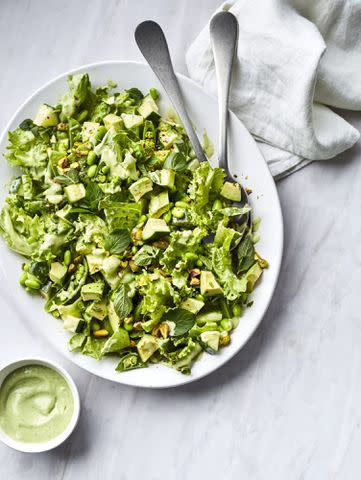
Spring Green Salad With Avocado, Peas, and Cucumber
Great news, avocado fans: The creamy fruit (yes, it's a fruit!) is another awesome source of vitamin E, offering about 4 milligrams for half an avocado (100 grams). "Other nutrients in avocado include potassium, vitamin K, and riboflavin," Pasquariello says, adding that avocado also contains fiber, which is "vital for healthy digestion, lowering cholesterol, maintaining blood sugar levels, and promoting longevity."
Canned Tomatoes, Tomato Sauces, and Tomato Paste
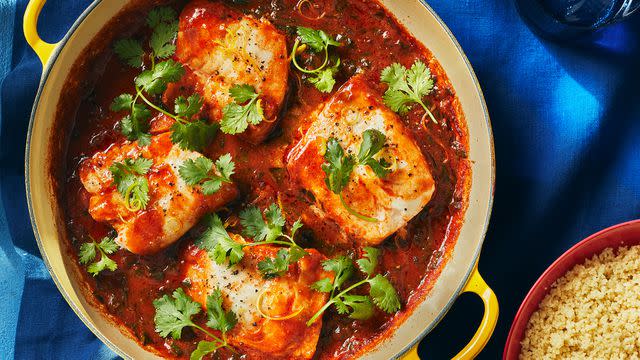
Braised Fish With Spicy Tomato Sauce
Known for its convenience and delicious flavor, canned tomato sauce helps you meet your daily quota for vitamin E. One cup of tomato sauce offers more than 3.5 milligrams, along with vitamin A, vitamin C, and potassium. Simply add a few seasonings and extra veggies (like those leafy greens) and enjoy with pasta, pizza, stews, and so much more.
Eggs
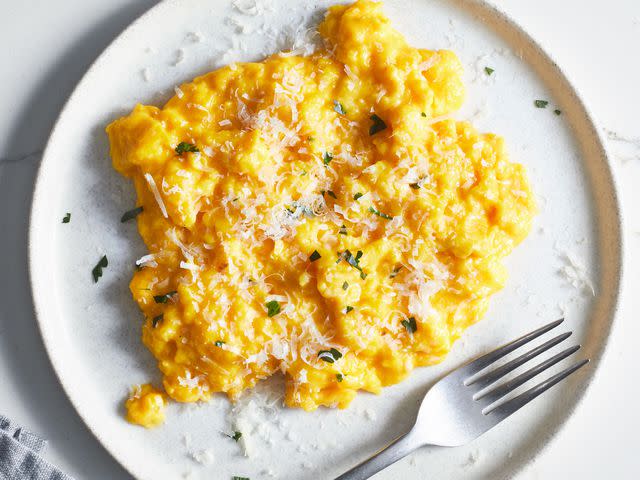
Eggs are often praised as rich sources of many essential nutrients, and vitamin E is on their impressive list. According to the USDA, two large eggs offer about 1 milligram of this vitamin, along with lean protein and vitamin A. “Eggs also contain choline and lutein, which [are] associated with brain development and eye health,” explains Andrea Mathis, MA, RDN, LD, registered dietitian and founder of Beautiful Eats & Things. Luckily, eggs are incredibly versatile, making it easy to enjoy the ingredient: bake into a quiche, stuff into a breakfast burrito, scramble it into fried rice, or poach an egg and serve it on leafy greens for a vitamin E-packed meal.
Broccoli
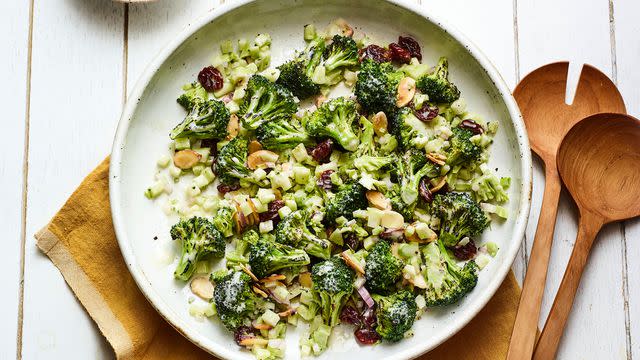
Tangy Broccoli Slaw With Slivered Almonds
If you're like most folks, you probably despised broccoli as a kid—but there are so many reasons to adore it now. The cruciferous veggie is earthy, crunchy, and brimming with key nutrients, including vitamin E. In one half-cup serving of boiled broccoli, you’ll get approximately 1.1 milligrams of the vitamin. To get the most from your broccoli, serve it with fats like a little butter, olive oil, or chopped nuts to enhance vitamin E absorption, Mathis says.
Asparagus

Roasted Asparagus With Flax Seed-Walnut Crumble
"Asparagus is a great source of vitamin E,” Mathis shares. “In fact, one cup of asparagus contains 1.5 milligrams." This vegetable is also rich in folate, which is necessary for the healthy development of cells, she adds. Try steaming or roasting the stalks and adding them to salads, pasta dishes, or a quiche for an instant asparagus recipe.
Mango
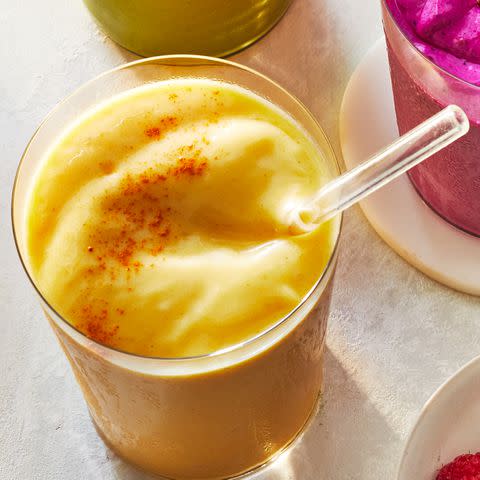
Delightfully juicy and sweet, mango is another food high in vitamin E, offering about 1.1 milligrams per cup. “Mango [is] also a great source of vitamin C, which helps [your] immune system function properly," Mathis adds. Use mango just like you would other fruits. Enjoy it alone as a nutritious snack or add it to smoothies, yogurt, oatmeal, and fruit salad. Love sweet-savory foods? Toss diced mango into salsa and serve it with your favorite protein, or try your hand at a deeply flavored mango-chicken curry.
Sweet Potatoes
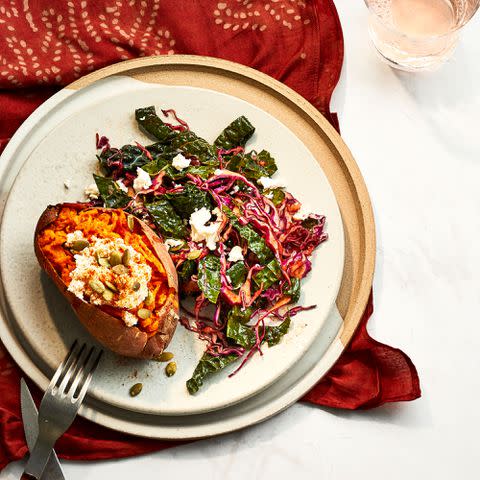
Baked Sweet Potatoes With Feta Butter
If you're in the mood for a potato dish, reach for the sweet kind. Sweet potatoes contain more vitamin E than yellow potatoes, about 1.3 milligrams vs. .12 milligrams, respectively. And in case you needed more reasons to add more sweet potato recipes to your rotation, the orange tubers have impressive amounts of vision-supporting vitamin A and gut-friendly fiber.
Related: Are Potatoes Good for You? We Asked a Nutritionist to Explain
For more Real Simple news, make sure to sign up for our newsletter!
Read the original article on Real Simple.
